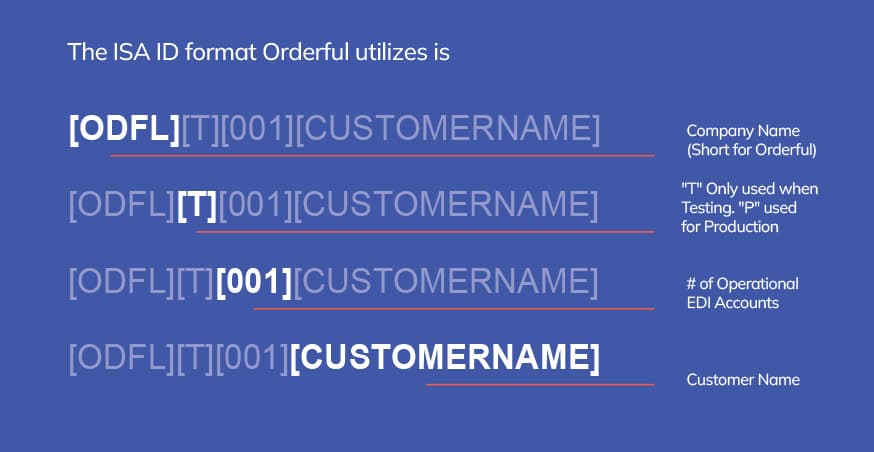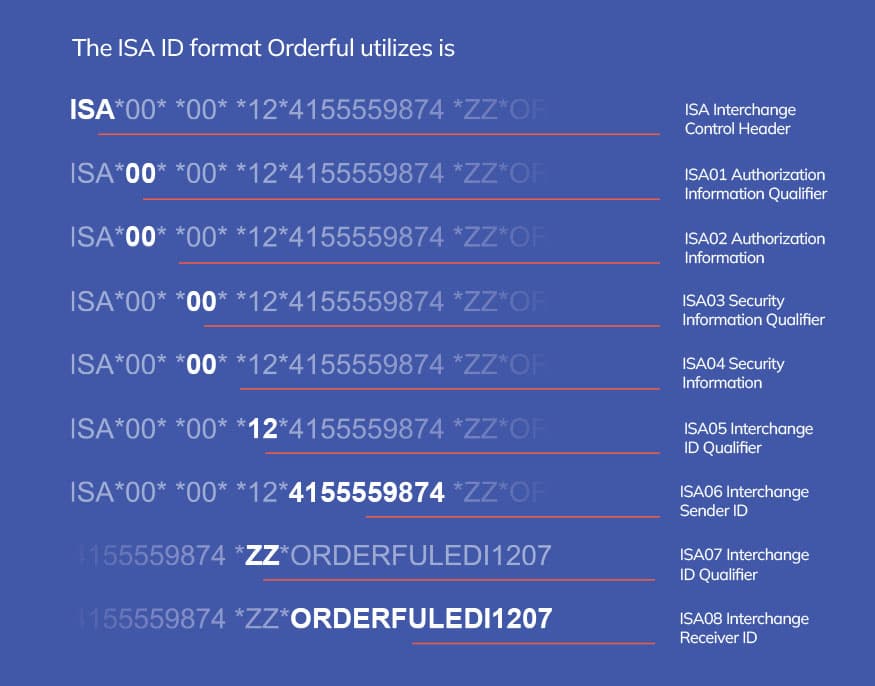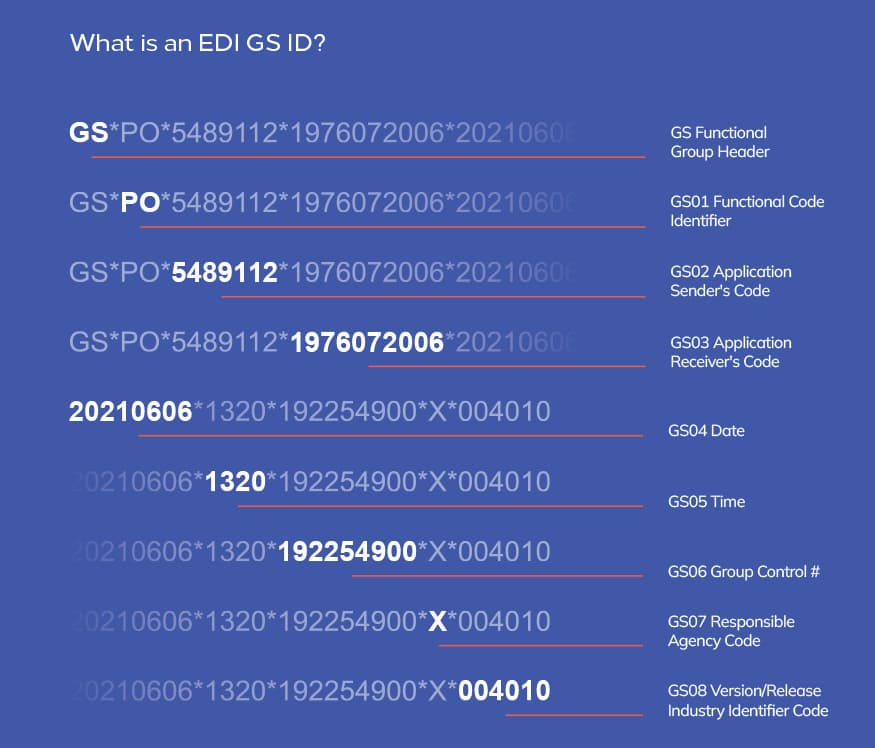Trading EDI data is confusing. You need to transact with a trading partner. The first piece of information you need is a unique identifier, also referred to as the ISA ID.
Typically, you’ll send an EDI transaction like a purchase order or invoice, with information related to product type, quantity, unit of measure, or price, among other fields. But before you reach that line level detail, you will need the ISA IDs for both you and your trading partner. The ISA ID identifies who is trading data.
Unfortunately, typing “Walmart” or “Amazon” into the transaction isn’t sufficient. In EDI transactions, this type of identifying information is shared exclusively via the ISA ID.
Getting started in EDI X12
In EDI X12, the Interchange Control Header (ISA) is the beginning segment of EDI documents. It forms the first part of the interchange envelope, and all other EDI data is placed within the envelope. The purpose of the EDI ISA segment elements is to identify the sender and receiver, date, time, and control number information. The first order of business is the ISA ID.
When you’re getting started, how do you identify your business entity or that of your trading partner via an ISA ID? How do you get the correct EDI ISA format?
Choosing your ISA ID for EDI
For companies new to EDI, the ISA ID can be particularly challenging because it MUST be unique on the network you’re trading on, and there’s no central repository of master ISA IDs. You’ll need your own ISA ID as well as the ID of your trading partner — which are designated as SENDER and RECEIVER in the X12.
It’s not necessary to register your ISA ID with anyone. The important thing is to choose an ISA ID that is unique, and then communicate this EDI ID to your trading partner (and vice-versa).
Three common ISA ID solutions
To address the challenge of choosing a unique ISA ID, companies typically turn to one of three common EDI solutions:
- DUNS number – (Dun & Bradstreet’s master Data Universal Numbering System)
- Telephone number
- Mutually defined identifier
In total there are more than 30 types of identifiers that can be utilized in EDI. Depending on the identifier that you choose, make sure to include the appropriate ISA ID qualifier. The two-digit qualifier comes before the ISA ID and is used to describe the ID number that follows.
- Qualifier ‘01’ — DUNS
- Qualifier ‘12’ — Telephone number
- Qualifier ‘ZZ’ — Mutually defined identifier
A typical ISA ID format for EDI

Take note, the “T” is only present when the ISA ID is part of a test and the number refers to the amount of operational EDI accounts.
Here’s an example using a phone number to identify the sender and a mutually defined identifier for the receiver:

When creating your ISA qualifier and ID, communicate closely with your trading partner, be creative to select something unique, and test the file to make sure that you’re able to identify each other.
One frequently asked question about ISA ID numbers is, “What is the correct length for an EDI ISA ID?” Visit this help document for more on the topic.
What is an EDI GS ID?

Your EDI GS ID (also known as the GS ID or Group ID) is normally the same as your ISA ID. If you already have ISA IDs for you and your trading partner, you have the information you need. The application sender’s code should be entered into the GS02 position in an X12 transaction, with the application receiver’s code being entered into the GS03 position in an X12 transaction.
Other EDI X12 segments
For context on how and where the ISA ID fits into the overall EDI X12 transaction, the segments are as follows:
ISA segment. This is the Interchange Control Header of the X12 transaction. This is the segment where you will enter your ISA ID.
GS segment. This is the Functional Group Header segment of a set of X12 documents of the same document type (a “transaction set”).
ST segment. This is the Transaction Set Header segment of an X12 document. There can be up to 999,000 transaction sets in a functional group.
SE segment. This is the Transaction set trailer segment of an X12 document.
GE segment. This is the Functional Group Trailer segment of a set of X12 documents of the same transaction set.
IEA segment. This segment marks the end of the interchange. Together with the ISA segment, it forms the Interchange Envelope.
EDI help is a click away
Now that we’ve gotten through your initial ISA ID challenge, are you ready to spend time working through setting up the next 20 lines of your EDI message just for one trading partner? If you’re exhausted by the idea alone, consider connecting to the Orderful EDI API for simplified canonical EDI mapping. Once you’re integrated to the master schema you can connect to any trading partner in your supply chain. Make sure to show up with your ISA qualifier and ID in tow and the rest of the integration can be seamless.
Download our white paper Why EDI is such a headache for suppliers–and what you can do about it.
Interested in learning more about EDI? Whether new to EDI or looking to deepen your knowledge, LearnEDI.org is here to help you understand how EDI can improve your operations
